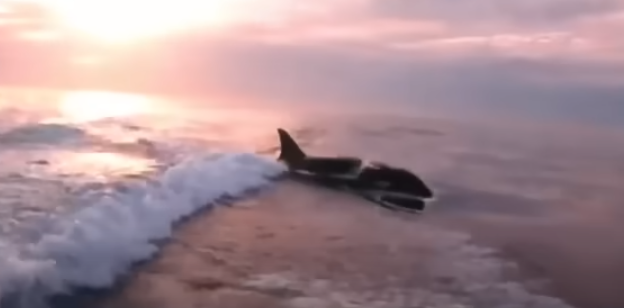Killer Whales: The Enigmatic Majesty of Orcas
The vast oceanic expanse is home to numerous awe-inspiring creatures, but few captivate our imagination as profoundly as the killer whales, or orcas. Orcas, with their sleek bodies, striking black-and-white coloration, and unparalleled intelligence, have enthralled humans for centuries. This essay delves into the world of killer whales, exploring their remarkable characteristics, social dynamics, ecological significance, and the challenges they face in our rapidly changing world.
- Physical Characteristics: Killer whales, or Orcinus orca, are the largest members of the dolphin family. With their distinctive black and white markings, streamlined bodies, and impressive dorsal fins, they are truly magnificent to behold. Adult males can reach lengths of up to 30 feet (9 meters) and weigh as much as 6 tons, while females are slightly smaller. Their powerful tails enable them to swim at speeds of up to 34.5 miles per hour (56 kilometers per hour), making them formidable marine predators.
- Social Structure and Intelligence: Orcas exhibit one of the most intricate and complex social structures in the animal kingdom. They live in highly cohesive family units known as pods, consisting of several generations of related individuals. Within a pod, strong social bonds are formed, with communication occurring through a vast repertoire of clicks, whistles, and calls. Orcas’ intelligence is remarkable; they possess large brains, sophisticated problem-solving abilities, and exhibit distinct cultural behaviors that vary between different populations. These traits contribute to their adaptability and success as apex predators.
- Feeding Habits and Ecological Role: Killer whales are renowned for their diverse diet, which can include fish, squid, seals, sea lions, and even other marine mammals. Different populations of orcas have developed specialized hunting techniques and prey preferences, reflecting their ability to adapt to local ecosystems. Their ecological role is crucial, as they help maintain a balanced marine ecosystem by regulating prey populations and influencing the behavior of other species. Orcas’ presence has a cascading effect throughout the food chain, making them a keystone species.
- Conservation and Threats: Despite their status as apex predators, killer whales face numerous challenges in today’s world. Habitat degradation, pollution, climate change, overfishing, and noise pollution from human activities pose significant threats to their survival. In some regions, populations are dwindling due to the accumulation of toxins in their bodies, the depletion of prey resources, and the disturbance of their habitat. Conservation efforts, such as the establishment of marine protected areas and regulations on whale watching activities, are essential for safeguarding these magnificent creatures.
Killer whales, orcas, hold a special place in our collective fascination with the ocean and its inhabitants. Their stunning physical characteristics, intricate social structures, intelligence, and ecological importance make them truly remarkable. However, as our actions continue to impact the marine environment, it is imperative that we recognize the threats facing killer whales and take steps to protect them. By understanding and respecting these majestic creatures, we can ensure their survival and continue to marvel at their presence in the world’s oceans for generations to come.

